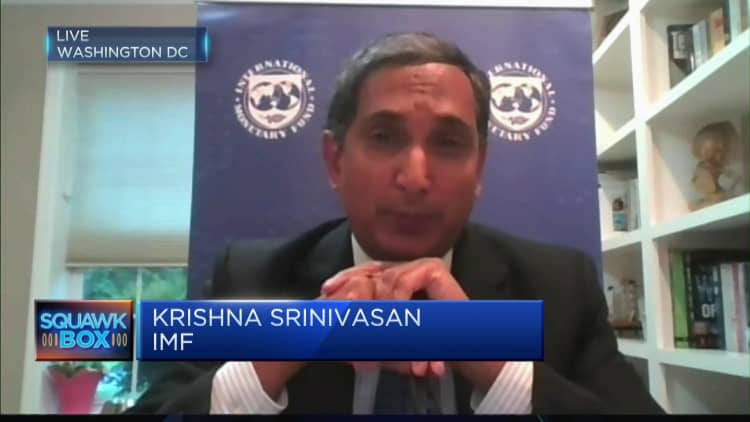Rising debt levels driven by inflation and tightening financial conditions across Asia are cause for concern, according to the International Monetary Fund's Krishna Srinivasan.
"If you look at debt for the region, if you look at Asia's share of total debt, aggregate debt, that's gone up quite sharply," Srinivasan, the director of the Asia and Pacific Department at the IMF, told CNBC's "Squawk Box Asia" on Wednesday.
He said debt in the region has risen from 25% before the pandemic to 38% now.
Srinivasan said countries at risk include Laos, Mongolia, Maldives and Papua New Guinea, noting Sri Lanka has already defaulted on its debt repayments.
Inflation in Laos hit 23.6% in June. The Asian Development Bank estimates Mongolia's annual inflation will hit 12.4% in 2022. Maldives has been struggling with high debt for years. While the Maldives' debt-to-GDP ratio has fallen over the past two years, it is still high at about 100% of GDP.
"So there are many countries in the region which are facing high debt numbers. And some of these countries are in debt distress territory. And so that's something which we have to watch out for," Srinivasan said.
In its global economic outlook released Tuesday, the IMF forecast a sharp slowdown in global growth from 6.1% last year to 3.2% this year, predicting growth in both China and India will be hit.

As a result, Srinivasan said growth in Asia will be significantly impacted in 2022 and 2023, slowing to 4.2% and 4.5%, respectively.
"This year, we see inflation to be quite a big factor. In fact, we marked up our forecast for inflation for Asia more broadly and it's particularly true for advanced economies in Asia," Srinivasan said. He did not, however, hazard a guess on "whether we are going to see a crisis or not" in the region.
"The [growth] markdowns reflect the serious impact of the [Ukraine] war. The war has led to [a] significant increase in inflation," Srinivasan said.
He said Asia as a whole has seen considerable tightening in financial conditions, especially as advanced economies raise interest rates.


